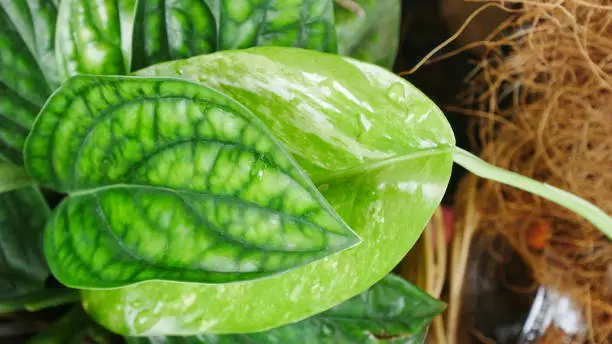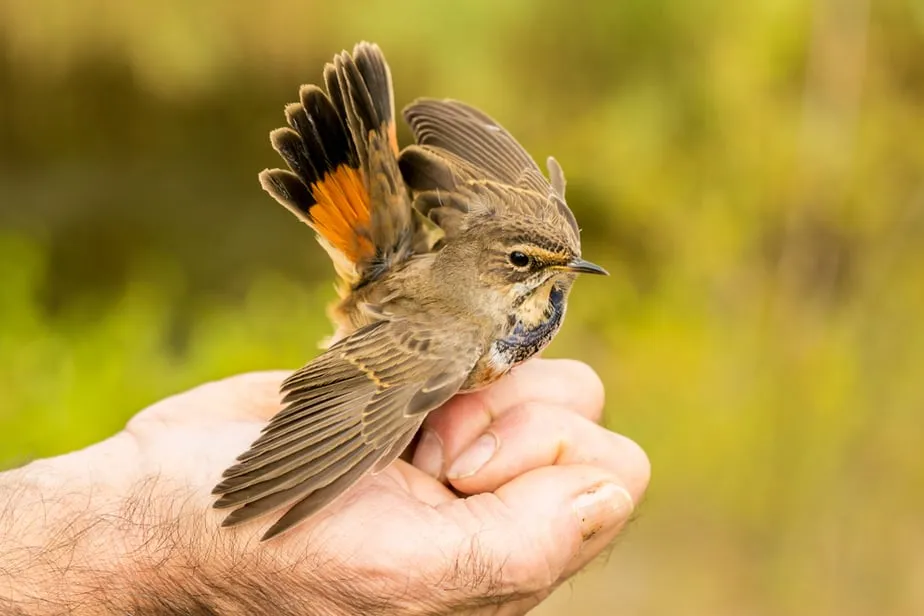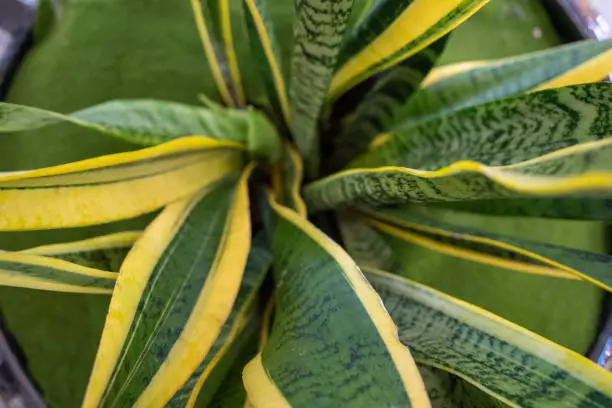Coco de mer is the most expensive palm tree in the world due to its scarcity and difficulty in growing. It is said to cost anywhere between $300 and $9000 depending on the size of the plant.
Although the name of the coco de mer seems to suggest it is a coconut tree, it is definitely not. There’s a difference between palm trees and coconut trees. This tree produces nuts that are not coconuts.
Coco de mer – The most expensive palm tree
Palm trees add tranquillity and peace to any space they thrive. However, each palm is unique and contains an aspect that sets it apart from the rest.
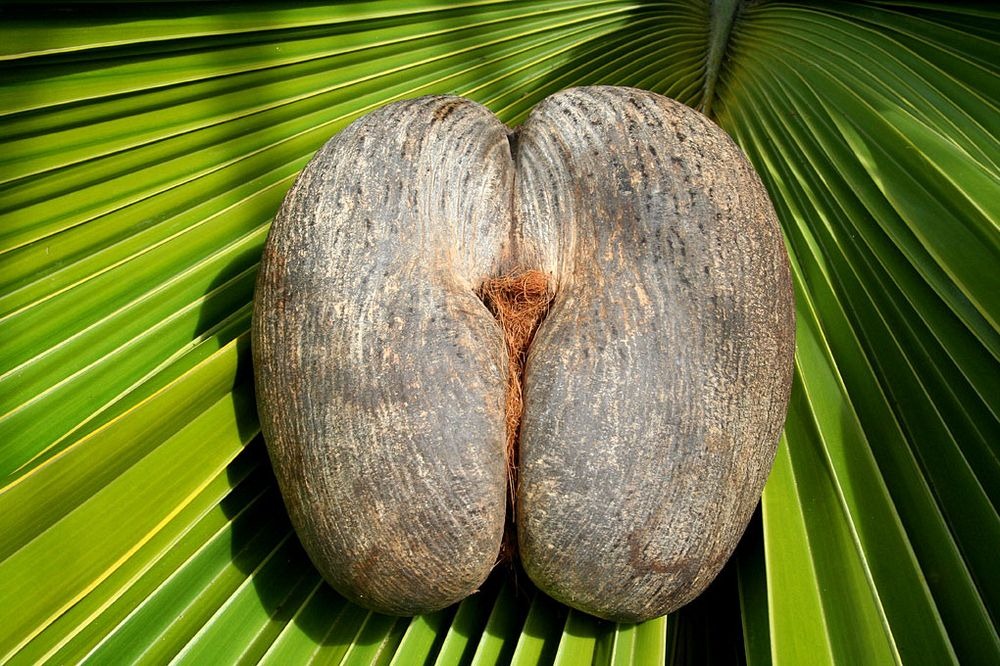
This highly valuable palm originates from the Praslin and Curieuse, two of the 115 islands that make the Republic of Seychelles near Madagascar. It produces large green nuts that are quite difficult to disperse due to their heavyweight. It’s difficult to cultivate this plant, as it’s been targeted for poaching.
The coco de mer is also referred to as love nut, Indian ocean coconut, and double coconut, and is one of the oldest and endangered palm species.
Coco de mer palm is considered one of the most valuable palm trees for several reasons:
- Scarcity: since it is very hard to disperse its seed, the coco de mer is very scarce around the world.
- Height: it grows to 82-110 feet tall
- Long fronds: Fronds grow more than 30 feet long.
- Rare flowering: It takes 20- 40 years before flowering
- Germination takes 2-3 years.
- Heavy nuts – weighing up to 19 lbs
The fruits are fibrous and fleshy and take between 6 to 7 years to mature. They additionally take two to three years to germinate. Also, they are bilobed and flattened and contain one seed. The fruit weighs 14 to 19 pounds. The leaves are fan-shaped and are around 7 to 10 meters long and 4.5 meters wide.
The seeds are scarce and take two years to develop. They are the heaviest and the largest in the entire plant kingdom.
How reproduction occurs
The sea coconut is dioecious, meaning it has separate female and male plants. There’s no animal big enough to dispose of the seeds from one place to another. Thus, geckos and winds are what aid in their pollination. The geckos usually carry pollen grains from the male plant to the female plant assisting in the process.
Coco de mer produces enormous pollen and fruits that can’t be spread around but fall at the base or ground.
The leaves have several functions. They collect the fertilizers through animal poop and dead plant materials.
When it rains, the debris funnels down to the fallen fruit providing it with water and nutrients needed for growth. The leaves also block sunlight, reducing the competition of the plants growing near these palm trees.
The only downside with this palm is its longevity status, as everything about it is prolonged. When left undisturbed by humans, palm tree diseases, or fire, the plant can continue to produce fruits and flowers for up to 800 years.
Uses of coco de mer
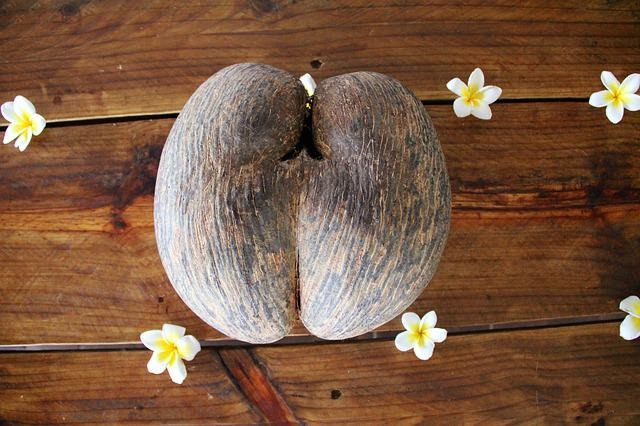
Since its discovery, coco de mer has had several uses, both traditional and modern. For the longest time, it has been the most cherished and prized nut. The plant was believed to contain healing properties and was even used as an antidote to poisonous substances. The nuts were also used as regal gifts, and the tough exterior was used as small vessels to carry water.
Currently, the young leaves are used in plaiting mats, hats, and baskets, and the old leaves are used in thatching houses. Although not commercially available, the fruit is edible. The plant is used in ayurvedic medicine, Siddha medicine, and traditional Chinese medicine.
Sometimes it’s used as a flavoring substance in southern Chinese cuisines.
Coco de mer care guide
Growing coco de mer in your backyard can be a strenuous activity. Despite taking approximately 50 years to grow, it’s also dioecious.
- You’ll need to have both the male and female species of this palm tree for the plant to reproduce.
- It takes 11-14 years to determine the gender of the tree.
- Coco de mer plant requires nutrient-starved rocky soil.
- The palm grows well in temperatures of about 75-79 degrees Fahrenheit.
- Lastly, it requires an average rainfall of 1600mm to 1700mm annually.
- Provide nitrogen and phosphorous fertilizers for the most expensive palm tree to thrive well.
Often, the coco de mer palm reuses 90% of the fronds it drops as fertilizer, so you’ll need very little care in terms of feeding the plant.
Other high-value palm trees
Apart from coco de mer, a few other palm trees are also considered to be expensive. Their cost often varies depending on the size. The bigger the palm tree, the higher the price.
Pygmy date palm
The pygmy date palm is a member of the family Aceraceae that has over 2600 different species growing in subtropical and tropical climates worldwide. It has small yellow-hued flowers that give way to tiny purplish dates.
Pygmy date palms require a regular watering schedule. They stay adequately moist when watered once a week. These plants thrive well in well-drained sandy soils, in places full of the sun to a full shade. It requires soil with a pH under 7. When exposed to a higher pH, it may develop potassium or magnesium deficiency and show signs of chlorosis or brown spots on the palm leaves.
Senegal date palm
Senegal date palm is an elegant-looking palm tree that originates from northern Africa. It’s sometimes referred to as phoenix reclinata. It’s mostly sought because of its high ornamental value and the brown fiber covering the slender stems.
The dates of Senegal’s palm are small, and the heart can be enjoyed as a vegetable. It’s great as it accentuates large landscapes and parks. A mature Senegal date palm reaches 35 feet, with a width of about 12 to 20 feet. Also, it’s a great source of dietary fiber and a versatile plant that can adapt to various sun and soil conditions.
Foxtail palm tree
The foxtail palm tree requires well-draining soil that isn’t highly acidic. It’s tolerant to salty sea spray and wind and a great option for those who stay on ocean fronts or salt-prone areas. It can make a great indoor plant as it’s good for the interior.
Foxtail palm is a self-cleaning plant, meaning the spent leaves will always die and fall when the plant needs to facilitate new growth. Although drought resistant, water at least once a week. Also, apply water-soluble fertilizers about four times a year.
Old man palm tree
Old man palm has circular fan leaves with emerald green on top, with silvery green and grayish underside, and can grow between 4 -6 feet. It originates from Cuba and does well in sub-tropical areas.
Their trunk makes them special with a thick mat of fibers. The color ranges from light brown to gray and sometimes golden yellow color. The fibers are attached to the trunk, then hide the old leaf bases. Although drought resistant, it does better with regular watering and fertilizer that has manganese.
The plant has a slow growth; hence it does fine, even when planted in a container for years.
Where to buy coco de mer seeds
You can buy coco de mer seeds in Seychelles. Seed supply is limited, and their price is quite hefty. You can find these seeds on Praslin island on Valle de Mai or Anse Lazio. Here, you will find a nature reserve with a huge concentration of coco de mer trees in the whole world. Additionally, there are gift shops where you can buy these seeds.
Before purchasing, check for any aesthetic flaws. To maintain its sanctity, the government of Seychelles imposed rules on selling and transporting the seeds to the rest of the world.
Check if they have a government seal and export license. If it doesn’t have these two things, you are likely to be fined, or worse, sent to prison.
Coco de mer is among the best expensive palm trees in the world. Although it takes longer to mature, the plant still remains amazing. Its whole existence, the size of the fruits and seeds, continues to be a wonder to the world.

